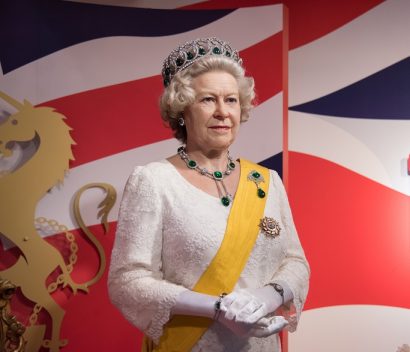God Save the Queen…’s Vision
Written by Dr. David Evans Last modified on August 6, 2018
For those of you out there suffering with Royal Wedding withdrawal, there’s some news about Queen Elizabeth that ties in nicely with Better Vision Guide. If you were wondering why the Queen has been spotted wearing sunglasses lately — an accessory she’s not typically seen wearing in public — it’s because she recently underwent cataract surgery and is protecting her eye during recovery.

A palace spokesperson confirmed that “The Queen successfully underwent a short, planned procedure to treat a cataract last month [May 2018].” At 92 years of age, this is the first such surgery for the Queen who is otherwise in fantastic health. Questions arose when the Queen started making appearances at garden parties at Buckingham Palace wearing sunglasses; something keen observers noted was a departure from her modus operandi. The shades not only protect the treated eye, but can help with the transition from cataract to clear lens, which can be a somewhat drastic transition.
What Exactly is a Cataract?
A cataract is a clouding of the lens that interferes with light entering the eye, inhibiting vision clarity. It is the leading cause of vision loss for people over the age of 40 and affects more than 22 million Americans.
Although cataracts are most often associated with the elderly (50 percent of people 80 and older have a cataract), it is possible to develop them early in life. In fact, in rare cases children are born with a cataract (congenital cataracts).
How are Cataracts Treated?
There are several types of cataract surgery that can be performed, all of which involve the removal of the clouded lens. (There is no way to remove a cataract without also removing the lens.)
In some cases, a probe may be inserted to break up the clouded lens with ultrasonic waves, then suctioned out (phaco cataract surgery). If you aren’t a candidate for that, larger incisions will be required so that the clouded lens can be removed without any ultrasonic breakup (extracapsular cataract extraction). For more precise treatment with a quicker recovery period, better results and a shorter treatment time, laser cataract surgery may be performed. Lastly, if there is an underlying visual acuity problem that also needs correcting, this may be done in concert with cataract removal (refractive cataract surgery). Regardless of the specific type of cataract surgery, all involve replacing the natural lens with an artificial intraocular lens (IOL).
It’s not clear what type of outpatient surgery the Queen had to remove her cataract, but I’m going to go out on a limb and assume it was the best available option. We do know that her surgery was performed at King Edward VII’s Hospital in Central London; the same hospital where her husband, Prince Philip underwent hip replacement surgery earlier this year.
Cost of Cataract Surgery
Cataract surgery isn’t cheap, but the good news is that it is often covered (at least in part) by medical insurance. That said, the average out-of-pocket cost of cataract surgery is $3,500 per eye, if you paid cash. If the procedure is covered by insurance, then your out-of-pocket cost is the deductible. The cost of surgery can fluctuate significantly based on a variety of factors, including the type of surgery, the part of the country (or the country at large) treatment is performed and the type of IOL you opt for, just to name a few. For example, laser cataract surgery is more expensive than standard surgery using phacoemulsification, and it is often not covered by insurance. And, if you choose a more advanced type of lens for the eye, then that option can increase the cost.
Cataract Surgery Recovery
Cataract surgery is a very safe procedure, even for someone aged 90 or older as the Queen has so adeptly proven. Nearly 100 percent of patients experience improved vision and are satisfied with the results. It is not without risk, but it appears as though the Queen’s surgery was an unmitigated success.
Recovery time varies, but on average patients have excellent vision immediately after surgery. In terms of the wound healing process, it could take a full month for the eye to recover. However, the bulk of healing occurs in the first couple days after surgery. Patients are advised to avoid activities that could interfere with ocular pressure, and should always wear sunglasses when outdoors to protect the eyes against bright colors and light.
Fortunately for the Queen, England isn’t exactly known for its bright, sunny days, so even if she forgets her trusty sunglasses, she should be just fine.
For more information, check out our Truth About Cataracts slideshow
You can also check out a previous post I’ve written about the future of cataract treatment
